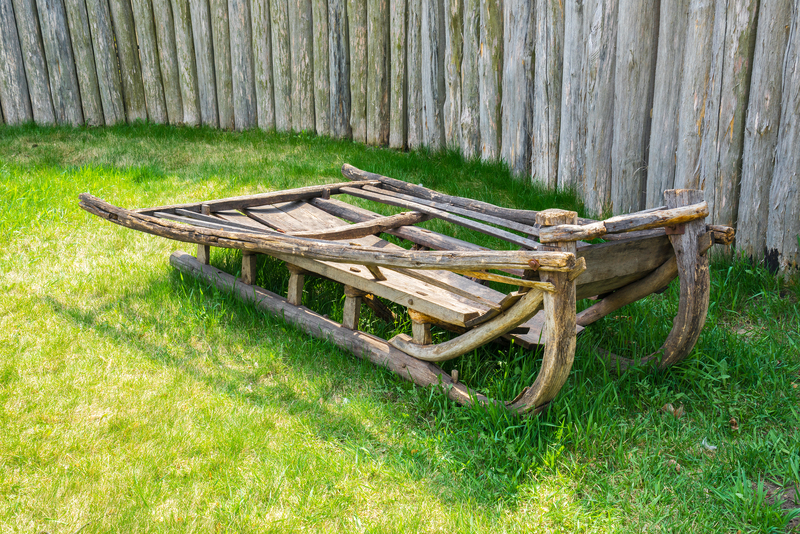How to Move Your Bed and Mattress in Tight Spaces: The Ultimate Guide
There are few household tasks as daunting as moving your bed and mattress through tight spaces. Whether you're navigating narrow hallways, small stairwells, or compact elevators, relocating bedroom furniture can quickly become an overwhelming challenge. However, with the right planning, equipment, and know-how, you can successfully maneuver your bed and mattress into any tricky area--without damaging your belongings or your home.
In this comprehensive guide, we'll show you step-by-step how to move your bed and mattress in tight spaces. We'll provide expert tips, essential tools, safety advice, and strategic techniques to help you master this process, whether you're tackling a DIY move or working with professional movers.
Why is Moving a Bed and Mattress Challenging?
Beds and mattresses are often the largest and bulkiest pieces of furniture we own. Their size, weight, and awkward shapes can create numerous obstacles when it comes to moving them, especially in tight quarters. The following are some of the main challenges homeowners face:
- Narrow hallways and door frames that are barely wider than your mattress
- Sharp corners or tight staircases with limited turning radius
- Low ceilings or small elevators in apartment buildings
- Fragile walls and floors prone to scratches and dents
Despite these obstacles, moving your bed and mattress through tight spaces can be manageable with a little creativity and the right approach.

Preparing Your Bed and Mattress for the Move
1. Gather the Right Tools and Supplies
Before you start moving your bedroom furniture, ensure you have all the necessary equipment to make the job easier--and safer. Essential moving supplies include:
- Measuring tape (to check dimensions of doors, hallways, and the bed/mattress)
- Mattress bag or plastic wrap (to protect your mattress from dirt and tears)
- Moving straps or furniture sliders (to reduce lifting strain and allow for easier maneuvering)
- Basic toolkit (including a screwdriver and wrench for disassembling the bed frame)
- Work gloves and protective padding
- Help from a moving partner if possible
2. Measure Everything
One of the most important tips to move a bed and mattress in tight spaces is taking accurate measurements. Follow these steps:
- Measure your mattress' length, width, and depth. (Standard queen size is 60" x 80", but always double-check yours.)
- Measure the bed frame's dimensions when fully assembled, as well as any disassembled components.
- Measure doors, hallways, stairwells, and other passageways from entry to exit.
- Note critical pinch points, such as sharp corners or low ceilings.
Double-checking measurements ensures you won't encounter any surprises halfway through your move and helps you determine the best path for transporting your bed and mattress safely.
3. Disassemble Your Bed Frame
Attempting to maneuver a fully assembled bed frame through small spaces is usually impossible. Disassemble your bed frame as much as you can:
- Remove the mattress and box spring first.
- Break down the bed frame into its smallest pieces--headboard, footboard, side rails, and support slats.
- Label all hardware (screws, bolts, nuts) in plastic bags and tape them securely to the corresponding pieces.
- If possible, take photos as you disassemble for easier reassembly.
Tip: If your bed has a large headboard or footboard, consider removing legs or decorative extensions to minimize dimensions.
4. Protect the Mattress and Components
Cover your mattress with a mattress bag or wrap it in sturdy plastic. This protects it from dirt, dust, and damage during the move. Wrap wooden or metal frame parts with moving blankets or bubble wrap, especially if you'll be squeezing them through narrow spaces where bumps are likely.
How to Move the Mattress Through Tight Spaces
1. Folding or Bending the Mattress
Most modern foam mattresses, such as memory foam or latex, can be safely bent or folded for short periods. Here's how:
- Check the mattress manufacturer's guidelines first, as not all mattresses can be bent without damage.
- Fold queen or king-size foam mattresses in half (taco-style), with the top and bottom aligned and the sleeping side inward.
- Use ratchet straps or ropes to keep the mattress folded while you maneuver through tight spots.
- Never bend innerspring mattresses with rigid coils, as this can permanently damage them.
Note: Folding is ideal for foam mattresses only. Traditional innerspring mattresses should be kept as flat as possible.
2. The "Angle and Twist" Maneuver
Sometimes, the best way to move a mattress in small spaces is by "angling and twisting" it to fit through doorways or stair turns:
- Lift the mattress upright (vertically) on its shortest end.
- Carefully angle the mattress through the doorway, twisting slightly as you go.
- If you hit a snag, try standing the mattress on its side or pushing through bottom first.
This technique works for most mattress types and sizes, but always be gentle to avoid damage.
3. Enlist Extra Help
Mattresses, especially larger sizes, can be cumbersome and heavy. Always have a partner to help you safely maneuver your mattress in tight spaces. This not only prevents injuries but also reduces the chances of scraping walls or damaging your mattress.
How to Move a Bed Frame Through Tight Spaces
1. Break Down to the Smallest Parts
The golden rule for moving a bed frame through narrow spaces is to disassemble it as much as possible. Small parts are easier to carry, less likely to scratch surfaces, and fit through tight passageways more easily. Always reference the manufacturer's assembly guide if available.
2. Use Furniture Sliders and Moving Straps
For larger or heavier pieces (such as a solid wood headboard), furniture sliders and moving straps can help you glide them across floors without lifting or risking damage. Sliders are especially helpful on carpeted rooms, while straps offer extra leverage on stairs or in elevators.
3. Move Vertically When Possible
Try positioning flat panels and rails vertically to navigate turnings or sharp corners. Sometimes holding a headboard upright will get it through a door that's too narrow for horizontal movement. If a piece still won't fit, remove any removable legs or decorative edges to minimize the profile.
Expert Tips for Tight Spaces
- Remove Obstacles: Clear the path before starting. Remove rugs, artwork, doors (if necessary), and any other items that might snag or block movement.
- Protect Your Walls and Floors: Tape moving blankets or towels to sharp corners, hallway walls, and door frames to avoid scuffs and scratches.
- Work Smarter, Not Harder: If a move looks impossible, stop and reassess your strategy. Sometimes, simply rotating the mattress or finding a different angle is all you need.
- Don't Force Anything: Forcing a tight fit may damage both the mattress and your home. Always test gently and recruit more hands if necessary.
- Use Professional Movers for Difficult Jobs: If your building has extremely narrow stairs or historic/fragile architecture, it may be worth hiring professionals experienced in moving furniture through tight spaces.
How to Move Your Bed and Mattress Upstairs or Downstairs in Tight Spaces
Staircases pose a unique challenge when moving beds and mattresses, especially if curved or steep. Follow these tips for safe transport:
- Always have at least two people, one at the top and one at the bottom of the stairs. Communication is key!
- Carry the mattress vertically, bending only if safe for your type of mattress.
- Step slowly and maintain balance--never rush.
- If the mattress or bed frame won't fit through the stairwell even after folding or breaking apart, explore alternative options such as external windows, balconies, or modular furniture (more on this below).
Unique Solutions for the Toughest Spots
If your mattress or frame truly won't fit, don't panic! Here are a few creative options:
- Use Flat-Pack Bed Frames: Consider switching to a bed frame specifically designed for easy assembly in small rooms with tight entryways.
- Window/Balcony Hoisting: In some rare circumstances, hiring movers to safely hoist your mattress or frame through a large window or balcony is feasible. Always consult professionals for this method.
- Mattress-in-a-Box: If you need a new mattress, modern options arrive compressed in a box, making them perfect for small spaces.
What if You Have an Adjustable or Specialty Bed?
Adjustable beds and extra-large frames need special consideration. Most adjustable bases disassemble, but may require special tools or multiple movers due to their weight. Always reference your manufacturer instructions or enlist professional help when unsure.
Safety First: Protect Yourself and Your Home
- Lift with your legs, not your back. Always practice proper lifting techniques to avoid injury.
- Wear sturdy shoes and work gloves for better grip and protection.
- Never slide heavy furniture across hardwood floors without protection--it can leave deep scratches.
- Use door stoppers or hold doors open to prevent them slamming shut mid-move.
- Be cautious on stairs; if the load is too heavy or awkward for two people, stop and get professional assistance.
Reassembling Your Bed in Your New Room
After successfully transporting your bed and mattress through tight spaces, it's time to reassemble and enjoy a good night's sleep. Follow these steps:
- Lay out all frame parts and reference your assembly photos if you took them.
- Check all nuts, bolts, and hardware--tighten as needed.
- Double-check the sturdiness and stability of the assembled frame.
- Gently unwrap the mattress and box spring, then allow foam mattresses time to regain their original shape if they were folded.
- Test the bed before adding bedding or heavy items.

Frequently Asked Questions About Moving Beds and Mattresses in Tight Spaces
Can all mattresses be folded to fit through tight spaces?
No. Only foam or latex mattresses can be safely bent or folded for short periods. Innerspring and hybrid mattresses should never be bent, as it can damage the internal coils and structure.
Is it worth hiring a professional moving service?
If you have oversized furniture, extremely narrow passageways, or valuable/historic property where you need to minimize risk, professional movers with experience in tricky spaces are often worth the investment.
Are there special bed frames for tight spaces?
Yes! Flat-pack or modular bed frames are designed to be fully disassembled for easy transport through small doors and apartments. They are a smart choice if you move frequently or live in a compact home.
How can I avoid damaging my mattress during the move?
Always use a mattress bag or heavy plastic wrap, handle gently, and never force bends or twists. Avoid setting your mattress on dirty, wet, or sharp surfaces.
Conclusion: You Can Move a Bed and Mattress in Tight Spaces!
Moving your bed and mattress through tight spaces doesn't have to be a nightmare. With thoughtful planning, the right tools, and help from a friend (or pro), you can conquer even the narrowest hallways, doorways, and stairwells. Just remember to measure first, disassemble when possible, protect your items, and take it slow. The satisfaction of enjoying your comfortable bed in your ~perfect~ room will make all the effort worthwhile.
Looking for more moving tips and bedroom solutions? Be sure to explore other articles on our website for expert advice on moving furniture in tight spaces, mattress care, and efficient home organization.
```


